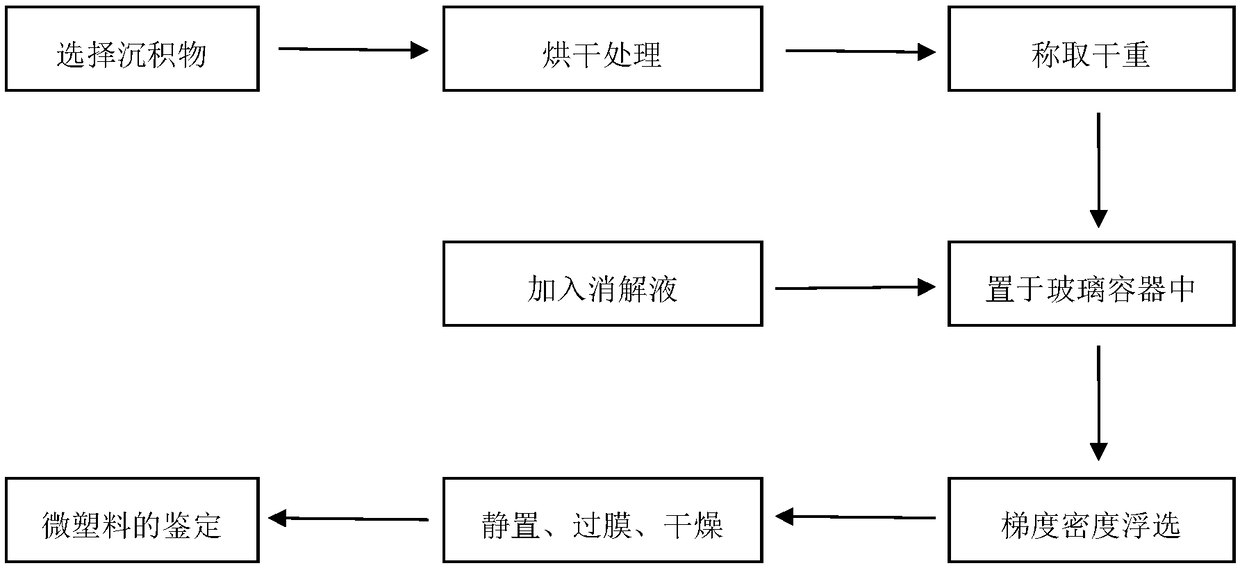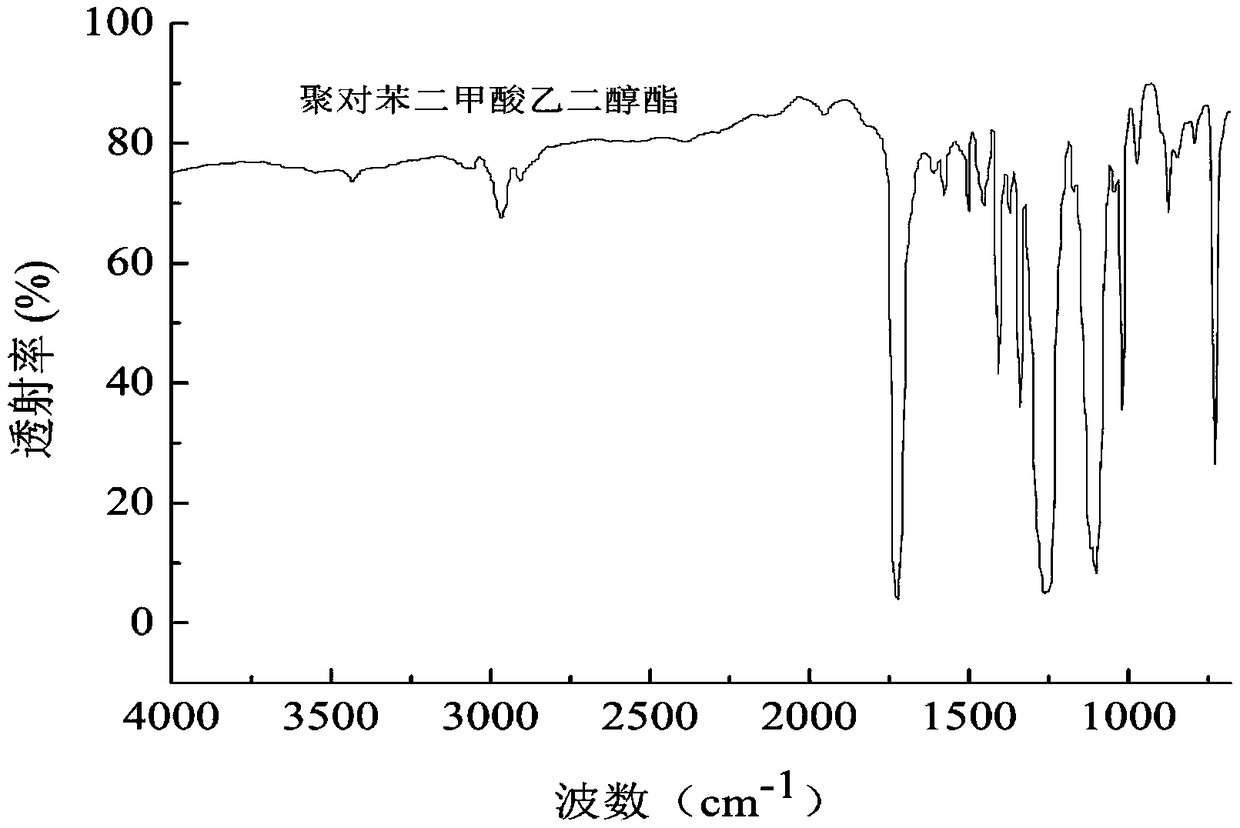Method for detecting density distribution of micro-plastics in water environment sediments
A technology of density distribution and sediments, applied in particle and sedimentation analysis, preparation of test samples, measurement devices, etc., can solve the problems of polymer structure damage, damage, misjudgment, etc., to improve accuracy and precision high effect
- Summary
- Abstract
- Description
- Claims
- Application Information
AI Technical Summary
Problems solved by technology
Method used
Image
Examples
Embodiment 1
[0063] Example 1:
[0064] (1) Select a sediment sample from the South Yellow Sea, place it in a clean beaker and dry it at 65°C to constant weight, and record the dry weight of the sediment;
[0065] (2) Take by weighing 100 g of the dry weight sediment sample and place it in a beaker, according to the weight of the sediment, add 100 mL of hydrogen peroxide solution with a mass fraction of 30%, and add in portions;
[0066] (3) Place the beaker on a magnetic stirrer for digestion at room temperature, and stir for 2 minutes until the sediment sample is completely digested;
[0067] (4) Add 1.2g / cm2 to the sediment after digestion and drying 3 NaCl and 1.55g / cm 3 KI solution was subjected to density flotation respectively;
[0068] (5) Vacuum filter the flotation heavy liquid, pass through the membrane, and dry at room temperature for 24 hours. Through the microscope inspection of the filter, the suspected particles are picked for microscopic-Fourier transform infrared spect...
Embodiment 2
[0080] (1) Select a sediment sample from the East China Sea, dry and weigh it in a clean beaker, and record the dry weight of the sediment;
[0081] (2) Take by weighing 100 g of the dry weight sediment sample and place it in a beaker, according to the weight of the sediment, add 100 mL of hydrogen peroxide solution with a mass fraction of 30%, and add in portions;
[0082] (3) Place the beaker on a magnetic stirrer for digestion at room temperature, and stir for 2 minutes until the sediment sample is completely digested;
[0083] (4) Add 1.2g / cm2 to the sediment after digestion and drying 3 NaCl and 1.55g / cm 3 KI solution was subjected to density flotation respectively;
[0084] (5) Vacuum filter the flotation heavy liquid, pass through the membrane, and dry at room temperature for 24 hours. Through the microscope inspection of the filter, the suspected particles are picked for microscopic-Fourier transform infrared spectroscopy and other analysis, and the microplastic part...
Embodiment 3
[0091] (1) Select sediment samples from tidal aquaculture areas, place them in a clean beaker, dry and weigh them, and record the dry weight of the sediments;
[0092] (2) Take by weighing 100 g of the dry weight sediment sample and place it in a beaker, according to the weight of the sediment, add 100 mL of hydrogen peroxide solution with a mass fraction of 30%, and add in portions;
[0093] (3) Place the beaker on a magnetic stirrer for digestion at room temperature, and stir for 2 minutes until the sediment sample is completely digested;
[0094] (4) Add 1.2g / cm2 to the sediment after digestion and drying 3 NaCl and 1.55g / cm 3 KI solution was subjected to density flotation respectively;
[0095] (5) Vacuum filter the flotation heavy liquid, pass through the membrane, and dry at room temperature for 24 hours. Through the microscope inspection of the filter, the suspected particles are picked for microscopic-Fourier transform infrared spectroscopy and other analysis, and th...
PUM
| Property | Measurement | Unit |
|---|---|---|
| pore size | aaaaa | aaaaa |
| particle diameter | aaaaa | aaaaa |
| density | aaaaa | aaaaa |
Abstract
Description
Claims
Application Information
 Login to View More
Login to View More - R&D
- Intellectual Property
- Life Sciences
- Materials
- Tech Scout
- Unparalleled Data Quality
- Higher Quality Content
- 60% Fewer Hallucinations
Browse by: Latest US Patents, China's latest patents, Technical Efficacy Thesaurus, Application Domain, Technology Topic, Popular Technical Reports.
© 2025 PatSnap. All rights reserved.Legal|Privacy policy|Modern Slavery Act Transparency Statement|Sitemap|About US| Contact US: help@patsnap.com



